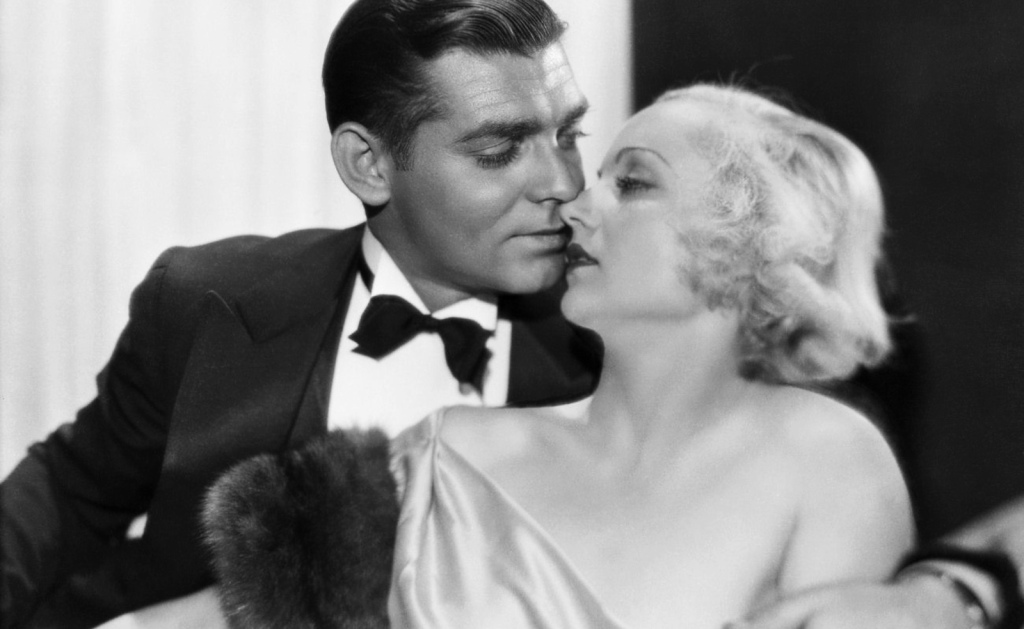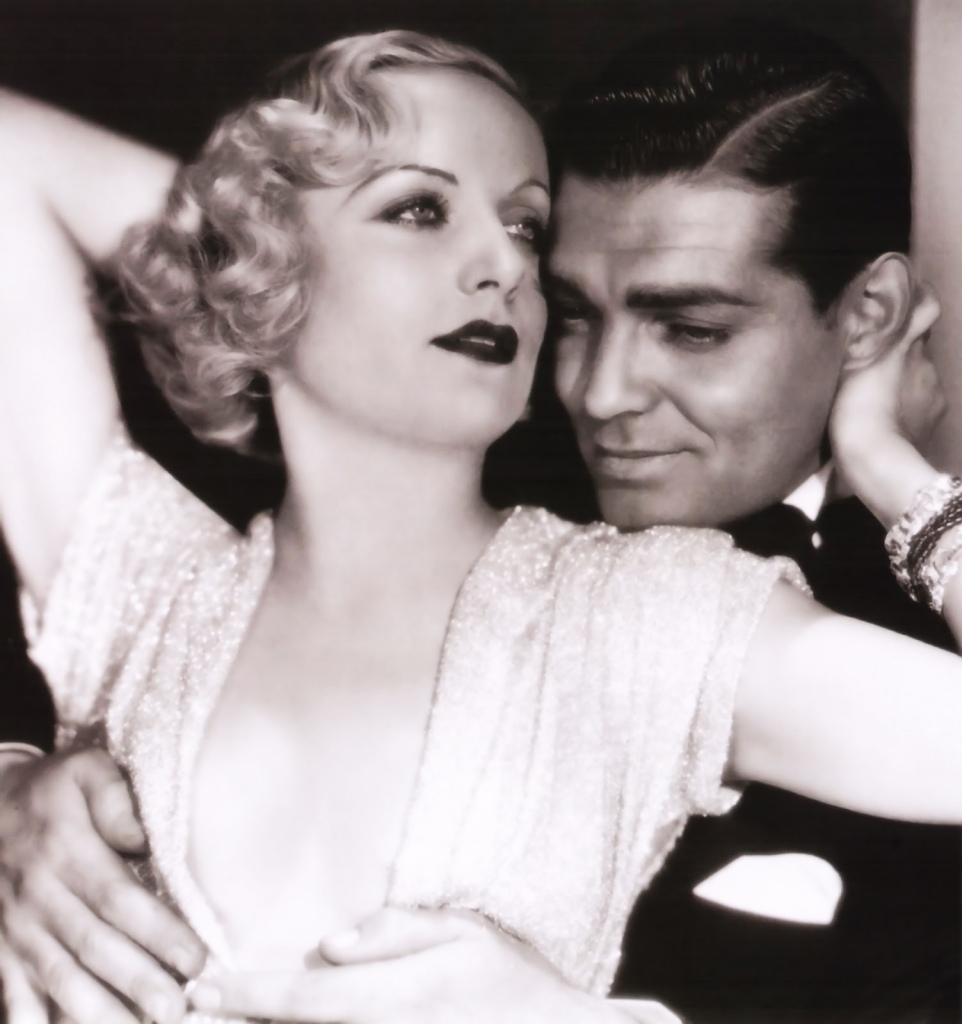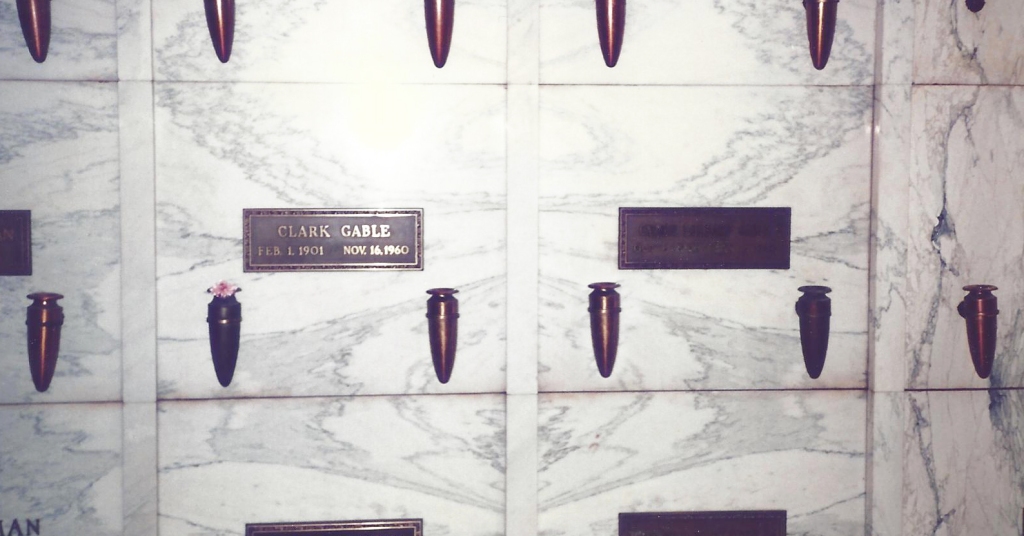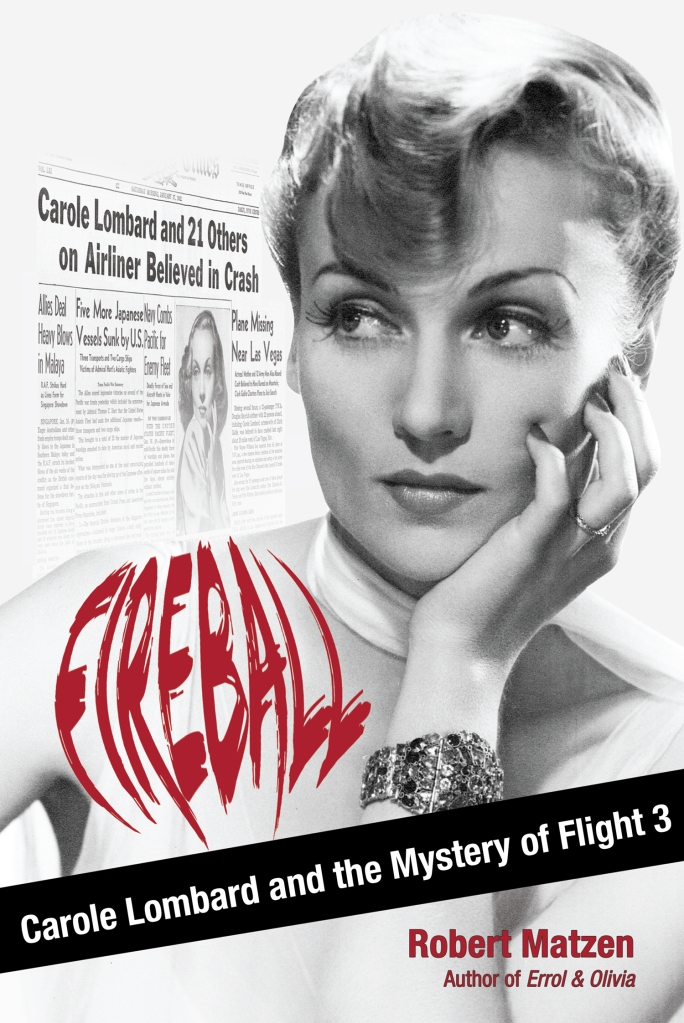
I once wrote a book called Fireball about an actress named Carole Lombard. Just to give you an idea of the theme, America’s preeminent Hollywood historian Leonard Maltin, as much as he loves Carole Lombard, never could crack Fireball open because it’s about, in part, her grisly death in a plane crash. Don’t get me wrong—Fireball is indeed part forensics study as recovery teams tried to clean up a crash scene where 23 people died and also understand how that crash happened. But more than anything, Fireball is a love story.
The experience of Fireball came back to me kaleidoscopically the other day as I watched the 1932 Paramount pre-Code picture No Man of Her Own, which starred a hot newcomer to the screen, Clark Gable, then age 31, and Paramount’s slowly rising star, Carole Lombard, then not quite 24. Given the fact this picture is now 91 years old, I understand if you don’t know who either of these people were but suffice to say Gable had burst on the scene in 1930, first portraying a convict in a stage play and then a love ’em and leave ’em tough guy in a number of movies made at MGM. Carole Lombard, meanwhile, had managed to land a contract at Paramount Pictures and was at this time struggling to find her footing. I think it’s fair to say early on she possessed mediocre talent balanced with buckets of natural charm.
MGM loaned Gable to Paramount so he could appear with Lombard and give her a career boost in one of those ridiculously plotted melodramas of the period; he plays a card sharp who goes on the lam from New York City and in the rural town of Glendale meets librarian Lombard. Lickety-split she falls in love with him and they wed on a bet, after which for 70 plodding moments we think how can this stupid thing ever work itself out, because by the nature of this kind of star vehicle, they have to live happily ever after.

Don’t worry—I don’t write movie reviews. The points I want to make are spooky points because there are spooky aspects about No Man of Her Own given that the love story in Fireball concerns these very same people, Clark Gable and Carole Lombard. When they made this picture 91 years ago, they didn’t know each other, and both were on their best behavior. Gable was married by convenience to a much older society matron, and Lombard was one year into a miserable marriage with a much older actor. Sparks between Clark and Carole didn’t fly in real life any more than they flew onscreen. Once in a while, you can see a glimmer of chemistry between them as the film lumbers along, but mostly they seem to be workers punching a timeclock.
In the picture she is the mature, stable, down-to-earth woman who, when she learns that her husband is a scoundrel who fleeces people in card games, doesn’t leave him. She chooses to stay and become his moral compass, which is exactly what Carole Lombard became for Clark Gable when they married seven years later and she discovered he was a scoundrel who had sex with every willing woman in Hollywood—and women threw themselves at Clark Gable every day because he was then considered “King of the Movies” and the most desirable man in the continent if not the world.
As described in Fireball, Lombard knew what she had gotten when marrying Gable: he was in demand and something of a scoundrel, but just like her character in the movie, she saw good points as well and determined to steer him on a navigable course. But real life wasn’t as clean and simple as a 1932 romantic melodrama, Carole learned when her husband began seeing a sexy starlet named Lana Turner who was just past her teens but already worldly. Suddenly, the bargain Carole had made took a Faustian turn that led directly to her death in flames on the mountain, as you will read in Fireball.
It struck me while watching No Man of Her Own how much the art of 1932 mirrored real life in 1941 as the dutiful wife stuck by her man through thick and thin until a particular other woman came along. It’s no stretch of the imagination to believe that a conversation like the one at a pivotal point in the movie played out at various points in real life.
Her: Don’t you know this had to happen sooner or later?
Him: What had to happen?
Her: Me finding out you’re a cheat.
Him: Don’t say that to me!
Her: I’ve been fighting the thought for weeks.
Him: My affairs are my own. Don’t butt into them!
Her: I thought we were married, and your affairs were mine.
This exchange written for actors in 1932 captures the dark side of the Gable-Lombard relationship. Other dialogue is downright chilling, as when they talk about settling down in Glendale, which in the movie is a fictional town somewhere in the east, maybe but probably not Glendale in the Queens borough of New York. In real life, a town by the name of Glendale is exactly where these two actors reside today, side by side in Glendale, California, in the Great Mausoleum at Forest Lawn Cemetery.

Fun fact: Carole Lombard comes back to life for an appearance in my new book, Season of the Gods, which will be released on October 3, 2023.





















 In case you haven’t noticed, we’re living through a gender revolution that will make the history books. Women from all walks of life are stepping out of the shadows to speak about the sexual abuse they’ve suffered, whether in the form of unwanted advances, or bullying, or rape. It began with actresses in Hollywood, but now workers in the casino, restaurant, and hospitality industries have come forward, and we stand at a moral crossroads. The movement has revealed the continued inequality of the sexes, and a truly surprising lack of progress made in the treatment of women by men. Personally, speaking only for myself as a male of the species, I would argue that men and women aren’t equal at all. Women are superior in almost every way.
In case you haven’t noticed, we’re living through a gender revolution that will make the history books. Women from all walks of life are stepping out of the shadows to speak about the sexual abuse they’ve suffered, whether in the form of unwanted advances, or bullying, or rape. It began with actresses in Hollywood, but now workers in the casino, restaurant, and hospitality industries have come forward, and we stand at a moral crossroads. The movement has revealed the continued inequality of the sexes, and a truly surprising lack of progress made in the treatment of women by men. Personally, speaking only for myself as a male of the species, I would argue that men and women aren’t equal at all. Women are superior in almost every way.












